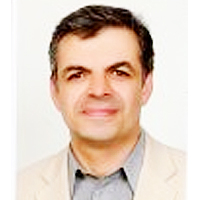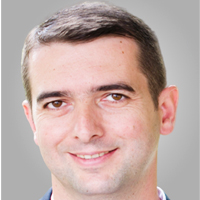Autologous hematopoietic stem cell transplantation in systemic sclerosis patientss
Published on: 27th February, 2020
OCLC Number/Unique Identifier: 8541470024
ystemic sclerosis (SScl) is an autoimmune disorder of unknown aetiology, characterised by fibrosis and microvascular injury of the affected organs. The hallmark of the disease is thickening and tightness of the skin and the subcutaneous tissue. SScl can affect virtually any organ systems, most importantly the skin, blood vessels, lungs, kidneys, gastrointestinal tract, and the heart [1].
The outcome of autologous hematopoietic stem cell transplantation in patients with multiple myeloma. The experience of King Fahad Specialist Hospital in Dammam, Saudi Arabia
Published on: 29th September, 2022
Background: Aautologous hematopoietic stem cell transplants (HSCT) is the standard of care for newly diagnosed patients with multiple myeloma (MM) who are eligible for autologous transplantation. Although cryopreservation is routinely employed, autologous HSCT can be performed using non-cryopreserved stem cells.Methods and materials: A retrospective study of patients with MM who received autologous HSCT between the 10th of October 2010 and the 31st of January 2022 at King Fahad Specialist Hospital (KFSH) in Dammam, Saudi Arabia was performed.Results: Over 11 years and 113 days, a total of 135 autologous HSCTs were performed for 119 patients with MM at our institution. Single autologous HSCTs were performed for 119 patients, while 16 of these patients received either planned tandem autologous transplants or second autografts due to either progression or relapse of their myeloma. The median age of patients with MM at autologous HSCT was 51.5 years. At presentation of their MM, the following high-risk (HR) features were encountered: stage III disease according to the revised international scoring system (RISS) in 12.3%; adverse cytogenetics in 31.93% of patients; advanced bone disease in 60.50%; and renal dysfunction or failure in 11.76% of patients. A total of 104 autologous HSCTs (77.04%) were performed without cryopreservation while 31 autografts (22.96%) were performed using cryopreserved apheresis stem cell products. Additionally, 54 autologous HSCTs (40.00%) were done at outpatient while 81 autografts (60.00%) were performed in an inpatient setting. Survival for 100 days post-HSCT for all patients with MM who received autologous transplants including those done at outpatient was 100%. The 4 years overall survival (OS) an progression-free survival (PFS) for patients with MM who received non- cryopreserved or fresh autologous HSCTs were 82% and 68% respectively.Conclusion: Autologous HSCT without cryopreservation is safe, and feasible and can lead to short-term as well as long-term outcomes that are comparable to autologous transplantation with cryopreservation. Non- cryopreserved autologous grafts allow the performance of autologous transplants in an outpatient setting to save beds and reduce costs.
Outcome of Outpatient Autologous Hematopoietic Stem Cell Transplantation in Patients with Multiple Myeloma and Relapsed and Refractory Hodgkin Lymphoma. The Experience of King Fahad Specialist Hospital in Dammam, Saudi Arabia
Published on: 8th March, 2023
Background: Autologous hematopoietic stem cell transplants (HSCT) is the standard of care for transplant-eligible patients with newly diagnosed multiple myeloma (MM) and patients with relapsed and refractory Hodgkin lymphoma (R/R-HL) who achieve chemosensitivity after salvage therapy. Although autologous HSCT is routinely performed in an inpatient setting, the procedure can safely be performed in an outpatient setting.Methods and materials: A retrospective study of patients with MM and R/R- HL who received outpatient autologous HSCT at King Fahad Specialist Hospital (KFSH) in Dammam, Saudi Arabia between the first of April 2017 and the 31st of January 2022 was performed.Results: Over the study period of 4 years and 10 months, a total of 90 outpatient autologous HSCTs were performed for 79 patients (54 patients with MM; 4 of them received planned tandem autografts and 7 other myeloma patients received second autologous HSCTs for relapsed or progressive disease; and 25 patients with R/R-HL) at our institution. The median ages of patients with MM and those with R/R-HL at HSCT were 50.4 years and 27.8 years respectively.At the presentation of their MM, the following high-risk (HR) features were encountered: stage II and III diseases according to the revised international scoring system (RISS) in 53.7%; adverse cytogenetics in 42.6% and extensive bone involvement in 53.7% of patients. In patients with HL at presentation, 48% of patients had stage IV disease according to Ann Arbor staging classification and 84% of patients had B symptoms.Survival for 100 days post-HSCT for all patients with MM and HL who received outpatient autologous transplants was 100%. For patients with MM, the overall survival (OS) rates at 3 years and 4 years post-HSCT were 80% and 67%, while the progression-free survival (PFS) rates over 3 years and 4 years were 58% and 38% respectively. For patients with HL, the OS at 6 years post-HSCT was 95% while the PFS rates at 3 years and 6 years post-HSCT were 84% and 62% respectively.Conclusion: Outpatient autologous HSCT for patients with MM and HL is safe, and feasible and can lead to short-term as well as long-term outcomes that are comparable to autologous transplantation performed in an inpatient setting. Additional benefits of outpatient autologous include saving beds and reducing hospital costs.
Fifteen year Follow-up of Relapsed/ Refractory Patients with Hodgkin Lymphoma Treated with Autologous Hematopoietic Stem Cell Transplantation
Published on: 2nd July, 2024
We reviewed our outcomes of patients with relapsed/refractory Hodgkin Lymphoma treated with autologous stem cell transplant over a 30-year period, 1992 to 2022 and are reporting 15-year Disease-Free Survival (DFS) and Overall Survival (OS) of the 36 patients treated (19 men, 17 women, median age 41). Over the years there were different preparative regimens employed (carmustine, etoposide, melphalan and BCNU, etoposide, cytarabine, and melphalan) as well as post-transplant consolidation therapy (brentuximab). With a median follow-up of 15 years, the DFS is 52% and OS is 64%. Long-term complications include cardiomyopathy and second malignancies.The use of better salvage regimens and post-transplant consolidation therapy should lead to better outcomes.
Elderly (> 70 years) Multiple Myeloma Patients Benefit Equally from Autologous Hematopoietic Stem Cell Transplantation When Compared to Younger Patients
Published on: 8th August, 2024
Autologous Hematopoietic Stem Cell Transplantation (AHSCT) performed after induction therapy is the standard of care for newly diagnosed Multiple Myeloma (MM) patients who qualify. Our institution has performed AHSCT for MM since 1991, and in this study, we sought to retrospectively examine the outcomes of 303 MM patients who underwent AHSCT from 1991-2021. We focused on Overall Survival (OS) and Progression-Free Survival (PFS) in patients in addition to Landmark survival (1-year post-transplantation). We found that in elderly patients > 70 years of age there was no significant difference in OS at 12 years, with 51% for patients < 70 years of age and 50% > 70; these were the same numbers for PFS at 12 years as well. We also found that median overall survival is improving overall with each decade in our transplanted MM patients with patient survival improved to over > 80% regardless of age at 7 years, when the previous median overall survival was 6 - 6.6 years before 2001. Given our findings, supported by others, we show that survival is continually improving over time in MM AHSCT patients and that AHSCT can be performed safely with equivalent landmark and long-term PFS and OS in patients of advanced age.
















